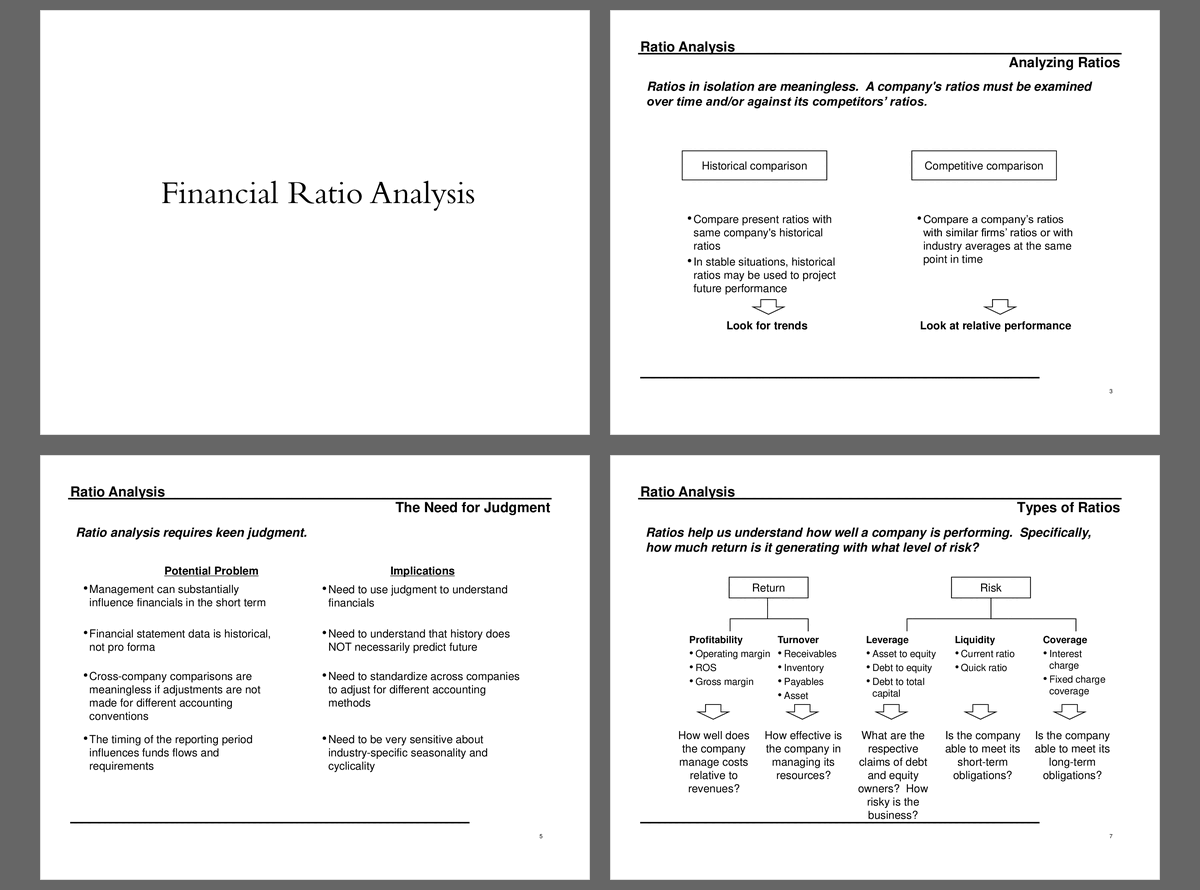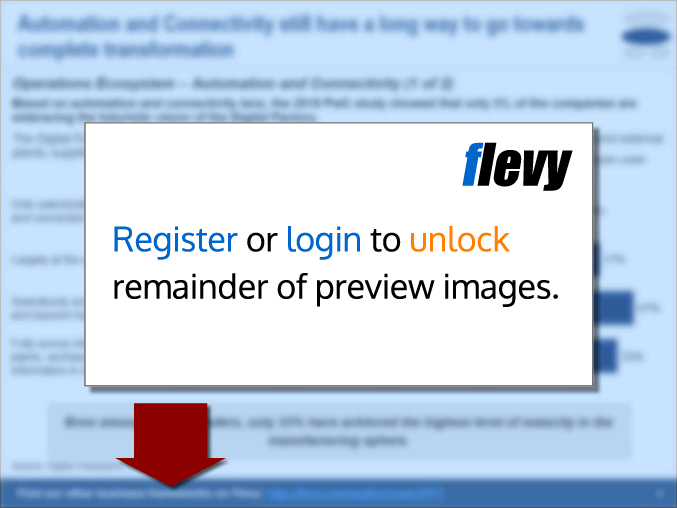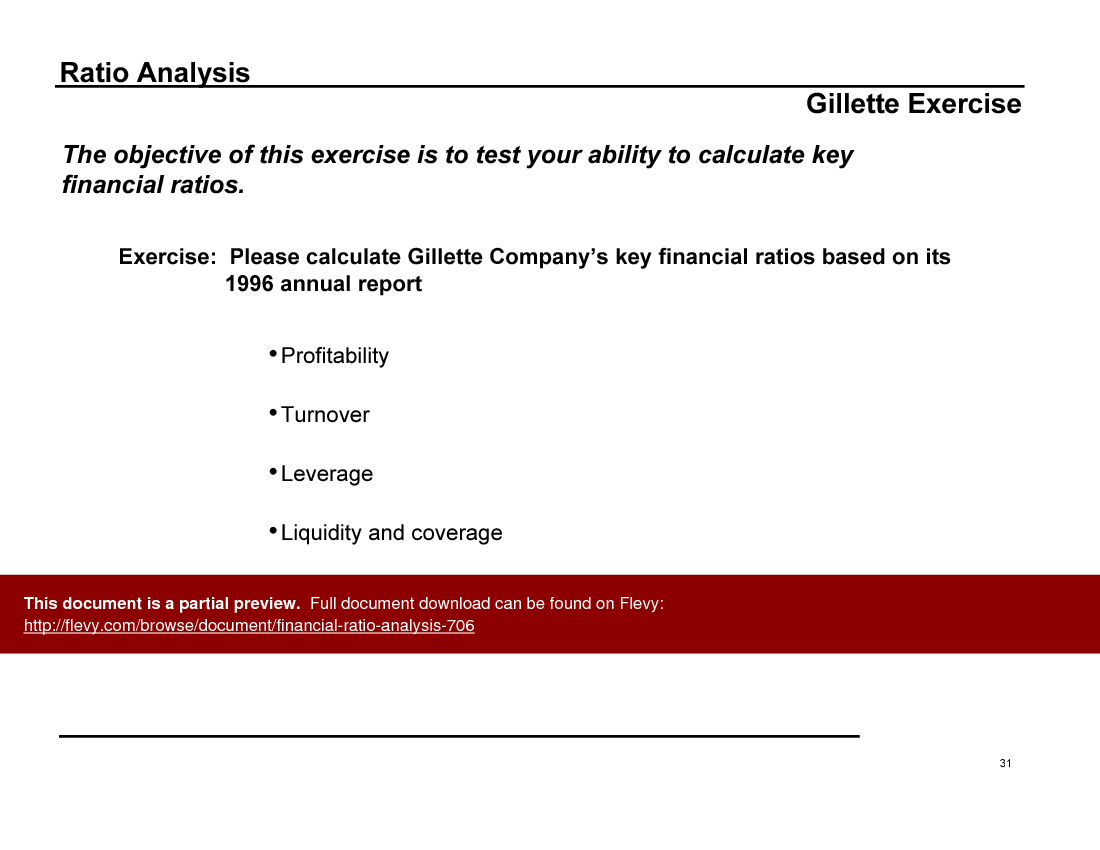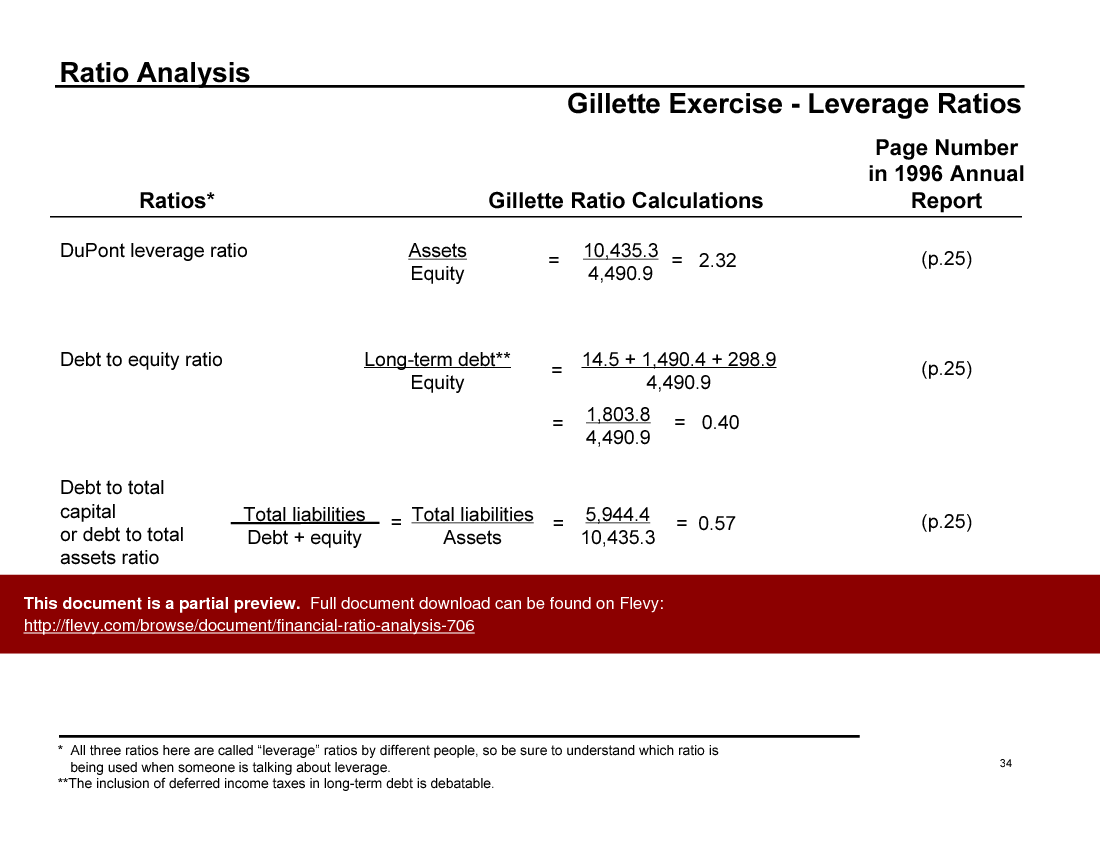Financial Ratio Analysis (PowerPoint PPT Slide Deck)
PowerPoint (PPT) 48 Slides
FINANCIAL ANALYSIS PPT DESCRIPTION
Ratios in isolation are meaningless. A company's ratios must be examined over time and/or against its competitors? ratios. Ratio analysis is an art as well as a science.
Ratio analysis requires keen judgment.
• Which ratios are most important in a given situation?
• What items should be included/excluded in calculating the ratios?
• How much influence does management have over the ratios?
• What do the ratios say about the firm?s strategy?
This presentation is a training material. It provides an overview of key financial ratios and their application in analyzing the financial health of an organization. It is an ideal reference for in-house training or MBA students.
This document dives deep into the intricacies of financial ratios, breaking down their definitions and practical applications. It covers profitability ratios such as gross profit margin, operating margin, and effective tax rate, explaining how these metrics should evolve as a company scales. The material also emphasizes the importance of managing turnover ratios, detailing the transaction cycle from raw materials to cash collection.
The presentation doesn't stop at just definitions; it includes exercises to test your understanding. You'll find tasks like matching industries to financial data and calculating key ratios for real-world companies. These exercises are designed to reinforce the theoretical knowledge with practical application, making it an invaluable resource for both training sessions and academic settings.
In addition, the document provides a comprehensive overview of leverage ratios, liquidity ratios, and coverage ratios. It explains how these ratios are derived from balance sheet and income statement items, offering a holistic view of a company's financial health. Whether you're a seasoned executive or an MBA student, this presentation equips you with the tools to perform robust financial analysis.
Got a question about the product? Email us at support@flevy.com or ask the author directly by using the "Ask the Author a Question" form. If you cannot view the preview above this document description, go here to view the large preview instead.
Source: Best Practices in Financial Analysis PowerPoint Slides: Financial Ratio Analysis PowerPoint (PPT) Presentation Slide Deck, Documents & Files
FINANCIAL ANALYSIS PPT SLIDES
This document is available as part of the following discounted bundle(s):
Save %!
Essential Consulting Knowledge Builder
This bundle contains 21 total documents. See all the documents to the right.













